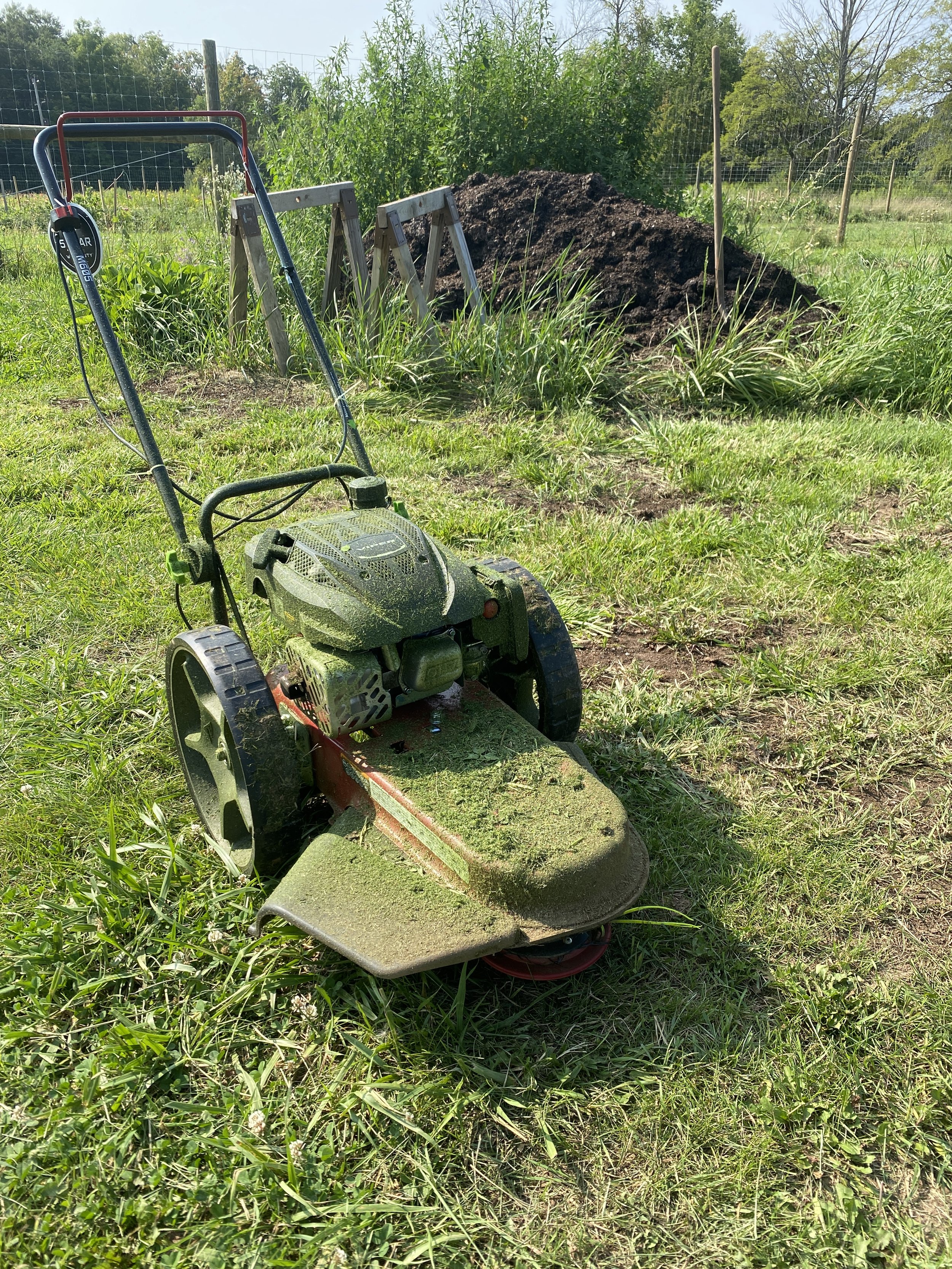How to Mow White Clover Pathways
January 26, 2024
In this follow-up post for learning How to Plant Cover Pathways, we will discuss how we keep our White Dutch Clover pathways mowed using a walk-behind string mower.
I’ve been seeding clover as a living pathway on our cut flower farm for a few seasons now, and overall, I really love the many positive benefits that clover provides for the perennial beds on the farm. There is, however, one down side to using clover as a living mulch, and that is the maintenance that is required to keep the clover under control.
do white clover pathways get out of control?
You might think that white clover, which is known to be a low growing ground cover, wouldn’t get out of control as a pathway material; but in the few years of growing living pathways on my farm I’ve learned the opposite is true. White clover absolutely can get out of control and will take over garden beds if left to its own devices. This is why having the proper equipment and a mowing schedule is so important.
Related: Outsourcing Compost and the Risks Involved
In a rainy year, white clover will happily spread from your pathways into garden beds and take over the growing space. This is actually desirable in our perennial shrub beds where clover will shade the soil, keep moisture in, and provide nutrients to the surrounding plants; however, in beds with annuals or herbaceous perennials, we definitely do not want the clover to spread to the beds.
Below is a photo of our perennial field with clover pathways that have gotten out of control and started taking over the growing beds.
we use a string mower to mow clover paths
For any living pathway, whether it’s clover or not, you’ll need a piece of equipment that is easy to maneuver on uneven ground, can handle thick clover/weed growth, and won’t clog up. On my flower farm, we were initially using this 80-Volt Kobalt Electric Lawnmower to mow the clover paths down, but much to my dismay, the lawnmower wasn’t easy to move around uneven ground and the blades kept clogging up with clover trimmings. It was a slow, frustrating, and inefficient mowing process.
We then purchased this Earthquake Walk-Behind String Mower and it works fabulously for mowing down the clover pathways. The wheels are extra large and make moving this machine across uneven ground, large rocks, and thick grass a total breeze. The string mower is useful for not only mowing clover paths, but also mowing hard-to-reach places that the tractor can’t mow, such as our fence line. The only issue with mowing is that the clover path is wider than the string mower (and the lawnmower, too — I did a poor job planning the pathway width) so we need to either go down the pathway twice with the string mower, or pull the clover that is creeping into the beds, by hand.
Related: Pros and Cons of Overplanting the Flower Farm
You’ll need replacement spools of plastic string for the string mower. Use this Triangle-shaped mower string for the most effective cutting edges. As opposed to braided/twisted or smooth string, the triangle string has sharp edges on it and will cut through plant material more effectively.
Here is a photo of our walk-behind string mower after lots of clover maintenance in its first year.
how often to mow clover pathways
We mow our clover paths once every two weeks, on a rotating schedule. Half of the paths get mowed one week, the other half get mowed the other week. Mowing is always being accomplished, and the clover is much more pleasant to walk through, especially when it’s wet.
Related: How to Cover Crop a Flower Farm or Garden
final thoughts on clover paths
We have nearly 100 clover pathways on our farm, and despite the extra work to keep the pathways mowed, I still love using clover as a pathway material in our perennial field. With the proper equipment and a schedule, maintaining clover pathways is doable and I highly recommend trying clover pathways as a regenerative, no-till support function for your crop production.
peace, love, and string mowers for all,
Fran Parrish




